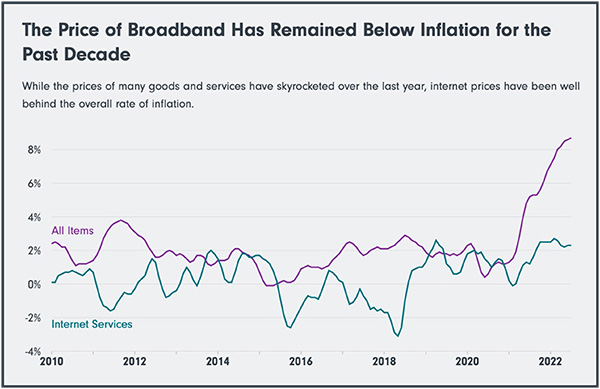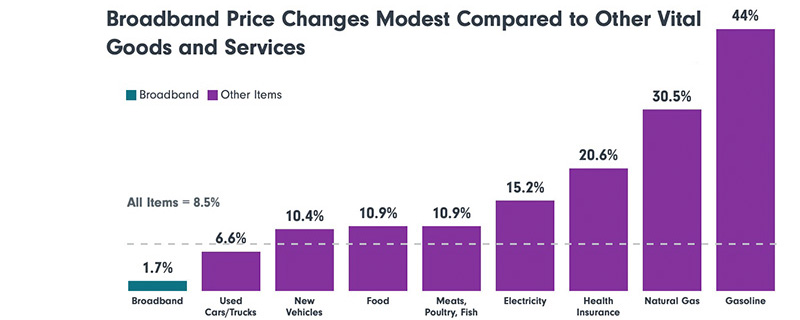The big story of the summer has been high inflation and rising costs—the uninvited guests that put a damper on vacation plans by making almost everything, from gas to food, more expensive. While prices for many goods and services continue to fluctuate, however, there is one essential service that has remained stable in pricing: home broadband.
Let’s explore the inflation trend and why broadband has remained an incredible value through it all.
Has inflation turned a corner?
After months of worrying about steadily rising prices, the July Consumer Price Index (CPI) report offered some good news: inflation slowed in June from 9.1% to 8.5%. These numbers were better than expected, as economists had braced themselves for continued rising costs.
Still, while prices may be starting to ease, they will likely remain elevated for some time. For how long, and by how much, depends on a variety of variables.
Broadband defies rising costs caused by inflation

Through the tumult of the past year—the pandemic, the supply-chain crisis, labor shortages, the war in Ukraine, and increasing tensions in the Pacific—broadband has remained steady in a sea of rising costs. In fact, since we last checked in on this topic in March 2022, broadband prices remain affordable and have continued to avoid surging inflation.
This news is particularly noteworthy for the broadband industry given that it relies heavily on new technologies—innovations that have been susceptible to inflationary and supply-chain pressures, such as the semiconductor shortage.
So why has the broadband industry been able to successfully defy the high rate of inflation impacting most other goods and services?
One key fact is that broadband providers have invested some $300 billion in networks and infrastructure over the last 20 years. Thanks to such investment, the industry has been able to weather both the spike in use provoked by the pandemic and the spike in prices which, in other circumstances, would have been reflected in cable and internet bills.
Broadband’s infrastructure investment is precisely why the Progressive Policy Institute has called its price resilience “a stunning phenomenon that deserves a lot more attention than it’s getting.”
The internet offers certainty
In uncertain times, broadband continues to offer a lifeline of certainty. Not only has it kept us connected, working, and playing during a pandemic, but it has also delivered price stability. This speaks to a commitment the broadband industry has to the communities it serves, not only reflected through its continuing investments but also its sponsorship of low-cost internet service programs such as Comcast’s Internet Essentials, Charter’s Spectrum Internet Assist, Cox Communication’s ConnectAssist, and Mediacom’s Connect2Compete.
While broadband alone cannot stem the tide of inflation, it has provided a steady floor under our feet when we have all had so many other stressors to handle over the past years.
